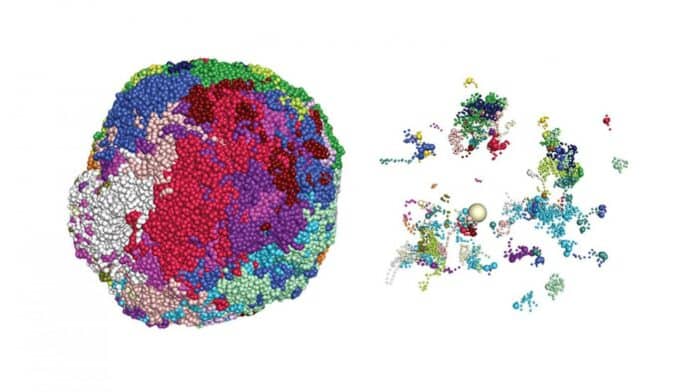The mammalian nose is a remarkable creation of evolution. It contains millions of nerve cells, each designed with one of thousands of specific odor-chemical receptors found in our genes. Together, these cells can recognize a trillion different scents. These scents are crucial in various activities, such as choosing food, identifying friends and enemies, and triggering memories.
In a new study, scientists from Columbia’s Zuckerman Institute uncovered a hidden mechanism involving the genetic molecule RNA in mice. This mechanism could explain how each sensory cell, or neuron, in the noses of mammals, becomes specialized to detect a particular scent.
For example, sensory neurons in our noses are designed to detect specific scents. Some neurons have receptors that recognize ethyl vanillin, the main odorant in vanilla, while others have receptors for limonene, which is the signature odor of lemons.
Stavros Lomvardas, Ph. is a Roy and Diana Vagelos Professor and Chair of Biochemistry and Molecular Biophysics and Herbert and Florence Irving Professor of Neuroscience at Columbia’s Zuckerman Institute and the Vagelos College of Physicians and Surgeons, and corresponding author on the paper.
Lomvardas said, “Now, the story behind our sense of smell, or olfaction, is becoming clearer and more dramatic.”
A competition in the tiny space of each olfactory neuron’s nucleus unfolds among the cell’s many olfactory receptor genes. Like a “Squid Game,” these genes compete to become prevailing, determining the cell’s sensitivity to specific odors. The study led by Dr. Lomvardas and his team reveals the last stage of this process, which is when the winning gene emerges from the finalists.
Ariel Pourmorady, the paper’s first author, said, “It’s basically a battle between 1000 contenders. We are reaching the edge of science fiction regarding the molecular and genomic details we now can observe inside a single cell‘s nucleus.”
The intricate process involves many molecular characters, influencing each gene’s capacity to generate olfactory receptors. Different molecules collaborate within the genome, either enhancing or suppressing specific genes. Molecular hubs also modify parts of the genome to favor specific receptor genes. These hubs, initially observed in 2014, were named “Greek Islands” by Dr. Lomvardas due to their resemblance to islands in the Aegean Sea.
Pourmorady said, “It turns out that the genome has a certain spatial organization in the nucleus, and changes in this structure are pivotal in which genes are expressed into proteins, like olfactory receptors. We are learning just how important this process is within maturing olfactory cells.”
In their recent study, scientists gathered evidence from mouse studies suggesting that RNA, traditionally known for translating genetic code into proteins, plays a crucial role in the olfactory system’s gene selection process. Beyond its role in protein production, RNA appears to have a pivotal second function in shaping the genome structure during cell maturation, as revealed through advanced techniques for analyzing these changes.
Pourmorady said, “It looks like the RNA the cell makes during gene expression also is altering the genome’s architecture in ways that bolster the expression of one olfactory receptor gene while also shutting down all the others.”
The ongoing research on how our genes control our sense of smell is making progress. As olfactory cells mature, they express various receptor genes in specific genomic hubs. RNA molecules then play a crucial role in narrowing down these genes to one winner at a particular hub, where receptor-gene expression intensifies. However, the same RNA can also travel to other hubs, causing changes in genome structure that silence gene expression. This intricate process ultimately leads to mature olfactory neurons, each equipped with a single odorant receptor on its surface.
Dr. Lomvardas said, “We are reaching the edge of science fiction when it comes to the molecular and genomic details we now can observe inside a single cell’s nucleus. We need to keep going back in to figure out the rest of this olfaction puzzle.”
Journal Reference:
- Pourmorady, A.D., Bashkirova, E.V., Chiariello, A.M. et al. RNA-mediated symmetry breaking enables singular olfactory receptor choice. Nature (2023). DOI: 10.1038/s41586-023-06845-4
